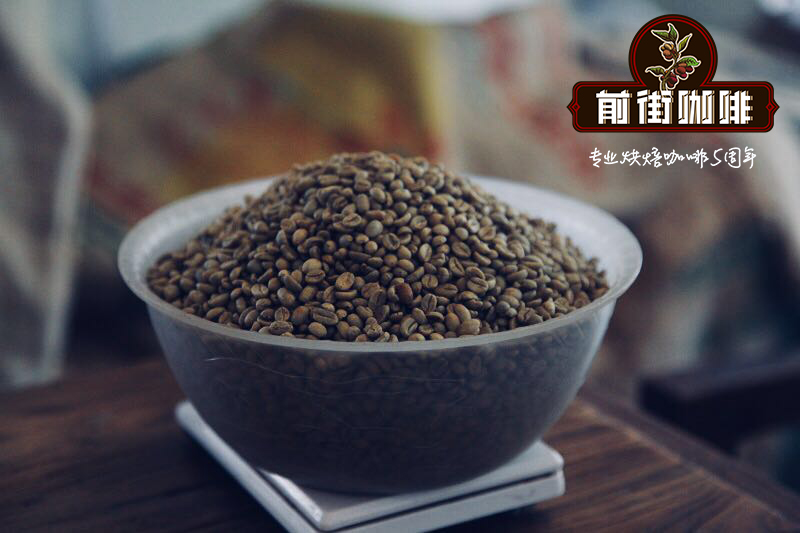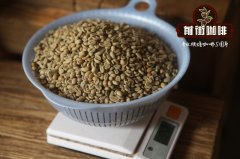What does Kenyan coffee mean, Kenyan AA? what are the flavor characteristics?

Professional coffee knowledge exchange more coffee bean information please follow the coffee workshop (Wechat official account cafe_style)
Coffee trees in Kenya are mostly planted at 1400 m-2000 m above sea level, and the growth areas include Ruiri, Thika, Kirinyaga and Mt. Kenya West, Nyeri, Kiambu and Muranga. Mainly in the foothills of Mt.Kenya and Aberdare. There are many producing areas in Kenya that strive to preserve the native forest ecosystem, protect the natural gene pool, support the reproduction of wild coffee varieties and breed a variety of coffee trees. A bourbon line screened and cultivated by French and British missionaries and researchers in Kenya at the beginning of the 20th century.
Over the past hundred years, it has adapted to the high concentration of phosphate soil in Kenya, giving birth to the special sour and fragrant spirit of Kenyan beans, which is different from bourbon beans in Central and South America.
This Kenyan native species was created by Scott Laboratories in 1930, known as SL for short. Agronomists wanted to find a kind of bourbon that was resistant to diseases and insect pests and had high yield, and SL28 was obtained through experiments.
. SL28 is a genetic variant with a mixed pedigree of French missionaries, mocha and Yemeni Tibica. The goal of breeding SL28 was to mass-produce coffee beans with high quality and resistance to diseases and insect pests.
Although the yield of SL28 was not as high as expected, the copper leaf color and broad bean-shaped beans have great sweetness, balance and complex flavor, as well as remarkable citrus and plum characteristics.
This important variety leads us to the unique Kenyan style: strong acidity, rich taste and beautiful balance.
Kenya AA is one of them.
The official grading system for raw beans in Kenya is as follows:
Class E (elephant beans):
This grade is the largest grain grade of Kenyan coffee beans, above 18 mesh (18beat 64 "), also known as elephant beans, and its quantity is so small that this grade can hardly be seen in the Taiwan market.
AA level:
Particle size (Screen Size) between 17 and 18 meshes (7.20mm sieve)
AB level:
The particle size (Screen Size) is between 15 murmurs and 16 mesh (6.8mm--6.2mm sieve), which accounts for the majority of production and is the most common grade of raw beans.
PB level:
Round raw beans, accounting for about 10% of all coffee beans
Level C:
Particle size (Screen Size) between 12 and 14 meshes (4.8mm--5.6mm sieve)
TT level:
From AA and AB grade beans, the lighter raw beans blown by an airflow filter indicate that the beans are soft and substandard in hardness.
Level T:
Particle size (Screen Size) less than 12 mesh size (4.8mm screen) from C-grade beans, the lighter bean blown by an air flow filter indicates that the bean is soft, the hardness is not up to standard, and it is a small particle, containing some broken and defective beans
END
Important Notice :
前街咖啡 FrontStreet Coffee has moved to new addredd:
FrontStreet Coffee Address: 315,Donghua East Road,GuangZhou
Tel:020 38364473
- Prev

Yega sherry orchard Yerga Shefi Boya Berry Orchard Flavor Features Introduction
Professional coffee knowledge exchange More coffee bean information Please pay attention to coffee workshop (Weixin Official Accounts cafe_style) Ye Jia Xue Fei Boya Coffee/Berry Orchard G1 (sun exposure) Taste analysis: Dry aroma smells intoxicating comprehensive berry aroma, blueberry, strawberry, wild berry, etc., a strong berry fruit accompanied by tropical fruit flavor, solid flavor, taste
- Next

Costa Rica honey processing What is honey processing How to distinguish characteristics What is honey processing
Professional coffee knowledge exchange More coffee bean information Please pay attention to coffee workshop (Weixin Official Accounts cafe_style) Costa Rica coffee has always been proud of their honey treated coffee, no more or no less fermentation degree to make coffee clarity and complexity to obtain an excellent balance; If someone says Costa Rica honey treated beans are the best honey treated beans in the world, I believe there are also not
Related
- Detailed explanation of Jadeite planting Land in Panamanian Jadeite Manor introduction to the grading system of Jadeite competitive bidding, Red bid, Green bid and Rose Summer
- Story of Coffee planting in Brenka region of Costa Rica Stonehenge Manor anaerobic heavy honey treatment of flavor mouth
- What's on the barrel of Blue Mountain Coffee beans?
- Can American coffee also pull flowers? How to use hot American style to pull out a good-looking pattern?
- Can you make a cold extract with coffee beans? What is the right proportion for cold-extracted coffee formula?
- Indonesian PWN Gold Mandrine Coffee Origin Features Flavor How to Chong? Mandolin coffee is American.
- A brief introduction to the flavor characteristics of Brazilian yellow bourbon coffee beans
- What is the effect of different water quality on the flavor of cold-extracted coffee? What kind of water is best for brewing coffee?
- Why do you think of Rose Summer whenever you mention Panamanian coffee?
- Introduction to the characteristics of authentic blue mountain coffee bean producing areas? What is the CIB Coffee Authority in Jamaica?

